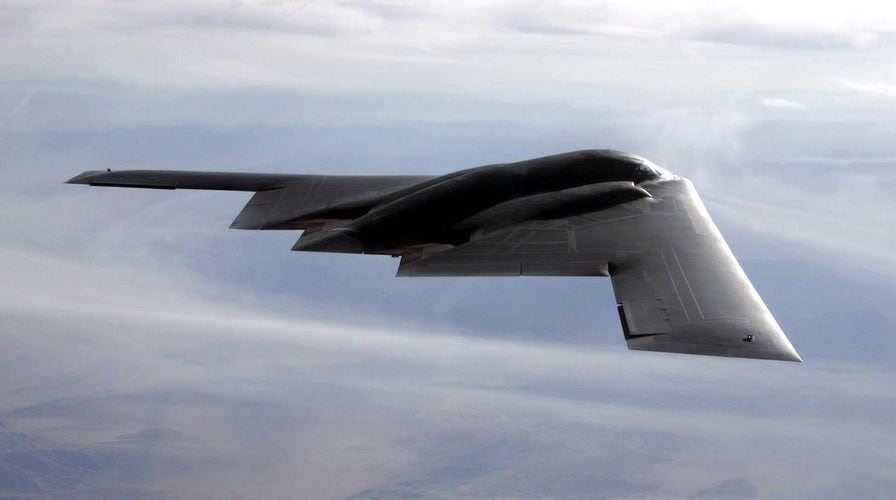Fox News Flash top headlines for April 26
Fox News Flash top headlines for April 26 are here. Check out what's clicking on Foxnews.com
“It is a dream to fly. It is so smooth,” Maj. Kent Mickelson, a former B-2 pilot, told Warrior Maven.
In a special interview designed to offer a rare look into the technologies and elements of the B-2, Mickelson - who planned B-2 bombing missions over Libya in 2011 - explained that the platform has held up and remained very effective – given that it was designed and built during the 1980s.
“It is a testament to the engineering team that here we are in 2016 and the B-2 is still able to do its job just as well today as it did in the 80s. While we look forward to modernization, nobody should come away with the thought that the B-2 isn't ready to deal with the threats that are out there today,” Mickelson, former director of operations for 394th combat training squadron, told Warrior Maven in an interview several years ago. “It is really an awesome bombing platform and it is just a marvel of technology.”
The B-2 is engineered with avionics, radar and communications technologies designed to identify and destroy enemy targets from high altitudes above hostile territory.
“It is a digital airplane. We are presented with what is commonly referred to as glass cockpit,” Mickelson said.
The glass cockpit includes various digital displays, including one showing Synthetic Aperture Radar (SAR) information which paints a rendering or picture of the ground below.
“SAR provides the pilots with a realistic display of the ground that they are able to use for targeting,” Mickelson said.
The B-2 has a two-man crew with only two ejection seats. Also, the crew is trained to deal with the rigors of a 40-hour mission.
“The B-2 represents a huge leap in technology from our legacy platforms such as the B-52 and the B-1 bomber. This involved taking the best of what is available and giving it to the aircrew,” Mickelson said.
The Air Force currently operates 20 B-2 bombers, with the majority of them based at Whiteman AFB in Missouri. The B-2 can reach altitudes of 50,000 feet and carry 40,000 pounds of payload, including both conventional and nuclear weapons.
The aircraft, which entered service in the 1980s, has flown missions over Iraq, Libya and Afghanistan. In fact, given its ability to fly as many as 6,000 nautical miles without the need to refuel, the B-2 flew from Missouri all the way to an island off the coast of India called Diego Garcia – before launching bombing missions over Afghanistan.
“Taking off from Whiteman and landing at Diego Garcia was one of the longest combat sorties the B-2 has ever taken. The bomber was very successful in Afghanistan and very successful in the early parts of the wars in Iraq and Libya,” Michelson added.
The B-2 crew uses what’s called a “long-duration kit,” which includes items such as a cot for sleeping and other essentials deemed necessary for a long flight, Mickelson explained.
B-2 Mission
As a stealth bomber engineered during the height of the Cold War, the B-2 was designed to elude Soviet air defenses and strike enemy targets – without an enemy ever knowing the aircraft was even there. This stealthy technological ability is referred to by industry experts as being able to evade air defenses using both high-frequency “engagement” radar, which can target planes, and lower frequency “surveillance” radar which can let enemies know an aircraft is in the vicinity.
The B-2 is described as a platform which can operate undetected over enemy territory and, in effect, “knock down the door” by destroying enemy radar and air defenses so that other aircraft can fly through a radar “corridor” and attack.
However, enemy air defenses are increasingly becoming technologically advanced and more sophisticated; some emerging systems are even able to detect some stealth aircraft using systems which are better networked, using faster computer processors and able to better detect aircraft at longer distances on a greater number of frequencies.
Kris Osborn is a Senior Fellow at The Lexington Institute - The Lexington Institute
More Weapons and Technology - WARRIOR MAVEN (CLICK HERE)—

